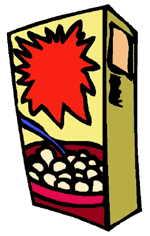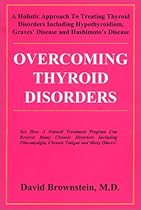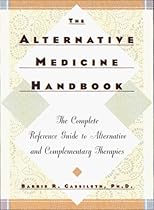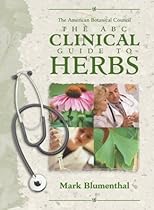| Artichoke Extract—reduces cholesterol and triglycerides
Artichoke (Cynara scolymus), a delicious table vegetable, has a reputation that extends beyond culinary enhancement. It has long been used to improve digestive and liver complaints, but more recently artichoke has become popular as a hypolipidemic. Studies have shown that the more lipid correction needed, the greater artichoke's cholesterol-lowering effects. Caf-feoylquinic acids and flavonoids, constituents of artichoke, appear to deliver much of the plant's positive effects. |
| Over the past 100-150 years, there has been an enormous increase in the consumption of n-6 fatty acids as a result of the increased intake of vegetable oils. In Western diets today, the ratio of n-6 to n-3 fatty acids ranges from approximately 20:1 to 30:1 instead of the traditional range of 1:1 to 2:1. It is thought that a high intake of n-6 fatty acids shifts the physiologic state to one that is primarily inflammatory by producing inflammatory hormone-like molecules known as prostaglandin E2 series. |
Arthur Agatston, M.D.
See book keywords and concepts |
 And then dinnertime was usually meat, vegetable, salad, and a starch. Pasta. Or potatoes. I was never a rice person. But I really liked my other carbs—pizza and sandwiches, too. I would rather eat a sandwich than sit down and have steak and potatoes. Pastry also—I love pastries. Not a candy eater, but I liked my breads and desserts. I wasn't a big soda drinker. I was never really that thirsty—that was another problem.
Everybody said, go to Weight Watchers. Try Jenny Craig. I've tried everything. One day I was talking to one of the girls in our office and I said to her, "Hey, you look great. And then dinnertime was usually meat, vegetable, salad, and a starch. Pasta. Or potatoes. I was never a rice person. But I really liked my other carbs—pizza and sandwiches, too. I would rather eat a sandwich than sit down and have steak and potatoes. Pastry also—I love pastries. Not a candy eater, but I liked my breads and desserts. I wasn't a big soda drinker. I was never really that thirsty—that was another problem.
Everybody said, go to Weight Watchers. Try Jenny Craig. I've tried everything. One day I was talking to one of the girls in our office and I said to her, "Hey, you look great. |
| When we eat fats, whether from flesh, vegetable oils, or dairy products, it is also insulin's job to transport the fatty acids (the basic component of fats) from the bloodstream into the body's tissues, where they belong, to be used immediately for fuel or stored for future use in the form we know as triglycerides or simply as fat.
In fact, diabetes can be seen as the body's inability to manage its fuel supply well. Obesity, too, is just a matter of bad fuel management, due to a combination of genetics and lifestyle. |
| How Carbs Work
As we've already said, carbohydrates are contained in a vast and varied array of foods, everything from the most virtuous vegetable to the most decadent treat. All carbs contain sugars. These sugars, though, exist in several different forms and go by a variety of names, including maltose (in beer), sucrose (table sugar), lactose (in dairy), and fructose (as found in fruit).
Despite that similarity, no one who has ever craved a sugar doughnut has been satisfied by broccoli. |
| This is one of several recent studies testing the theory that eating bad carbs makes you hungrier, and that on a diet of good carbs and good fats (the vegetable omelet combines both) you'll want less food later. I'll explain exactly why this happens, but for now I want to emphasize what all the studies show: Eating bad carbohydrates—especially highly processed ones— creates cravings for more bad carbs, which ultimately is responsible for our epidemic of obesity. It's hard to overstate the connection between bad carbs, obesity and bad cardiac health. |
Earl L. Mindell, RPh, PhD with Virginia Hopkins, MA
See book keywords and concepts |
| Millions have reduced or eliminated sources of animal fat from their diets to reduce their cholesterol consumption, thinking that replacing those foods with vegetable oils, grain-based foods, and low-fat versions of other foods will protect them against heart attack—still the number one cause of death in the United States.
The first problem with this approach is that the diet-heart hypothesis is a myth. Nearly all of the studies frequendy cited as supportive of the diet-heart hypothesis are, in fact, methodologically or statistically weak. |
| The Doctor's Guide to Vitamin B6 (Rodale Press, 1984), other causes of vitamin B6 depletion include the chemical hydrazine, found in rocket and jet fuel and cigarette smoke; isoni-azid, a drug used to treat tuberculosis; hydralazine, a prescription drug used to treat high blood pressure; the antidepressant phenelzine; the herbicide maleic hydrazide; the deadly chemical pollutants PCBs; and possibly rancid unsaturated vegetable oils.
Once carpal tunnel gets established in the nerves of the wrist, it is very difficult to treat. |
Mike Adams, the Health Ranger
See article keywords and concepts |
 You should also give up cheap fats such as the low-cost vegetable oils found in the grocery store, and move to the more expensive fats, such as cold-pressed extra virgin olive oil. This is one of the cases where extra money goes a long way in protecting your health. Getting healthy fats from fish oils is also quite expensive.
But let's talk now about a strategy that’s absolutely free and that will protect you from plaque buildup in your arteries. And this is perhaps even more important than getting good fats into your diet. You should also give up cheap fats such as the low-cost vegetable oils found in the grocery store, and move to the more expensive fats, such as cold-pressed extra virgin olive oil. This is one of the cases where extra money goes a long way in protecting your health. Getting healthy fats from fish oils is also quite expensive.
But let's talk now about a strategy that’s absolutely free and that will protect you from plaque buildup in your arteries. And this is perhaps even more important than getting good fats into your diet. |
David Hoffman, FNIMH, AHG
See book keywords and concepts |
 PLANT EXUDATES
Plant exudates are chemically complex, solid or semisolid mixtures of vegetable origin, such as balsams, gums, ole-oresins, and resins. The proportions of their constituents vary with climate, season of the year, and other factors.
Resins
A resin is a natural or synthetic organic compound consisting of a noncrystalline or viscous liquid substance. Most natural resins are exuded from trees, especially pines and firs. Resin forms in response to injury to the bark from wind, fire, lightning, or other cause. PLANT EXUDATES
Plant exudates are chemically complex, solid or semisolid mixtures of vegetable origin, such as balsams, gums, ole-oresins, and resins. The proportions of their constituents vary with climate, season of the year, and other factors.
Resins
A resin is a natural or synthetic organic compound consisting of a noncrystalline or viscous liquid substance. Most natural resins are exuded from trees, especially pines and firs. Resin forms in response to injury to the bark from wind, fire, lightning, or other cause. |
| A further twist in the convolution of confusion is the way in which horsetail formulations are sometimes sold as "vegetable silica," implying that the need for silica is an established fact and that the traditional use of horsetail is as a source of silica. Again I ask, Where is the evidence?
This all becomes rather surreal with the invocation of a singular process termed "biotransmutation," whereby the silicon is supposedly transmuted into calcium in the body. We are moving into the realm of alchemy here, but I would have no problem with this if some evidence existed to support this claim. |
| Anticarcinogens
A review published in 1992 cites more than 200 studies that correlate fruit and vegetable intake with protective effects against various cancers.97 Although the vitamins and minerals in these foods are a factor, nonnutritive constituents are believed to also play a significant anti-carcinogenic role.
Two mechanisms have been suggested by which such dietary components may inhibit carcinogenesis: by blocking the action of carcinogens or tumor promoters and by suppressing the evolution of initiated cells.98 Blocking agents act by at least four mechanisms:
1. |
| Official Decoctions (Decocta)
Remingtons describes decoctions as liquid preparations made by boiling vegetable substances with water. A general formula for decoctions can be found in the USP.
Decoctions must be freshly made, and when their strength is not otherwise directed, they are to be prepared by the following general formula:
The Drug, coarsely comminuted 50 g
Water, a sufficient quantity, to make 1000 ml
Place the drug in a suitable vessel provided with a cover, pour upon it 1000 cc. of cold water, cover and boil for fifteen minutes. |
| To avoid the introduction of powdered plant material into the body, however, another method must be employed: Use gelatin and vegetable glycerin as a base and add an infusion, a decoction, or a tincture in the following proportions.
Suppository
Gelatin 10 parts
Water (or infusion, decoction, tincture) 40 parts
Glycerin 15 parts
Soak the gelatin in the liquid and dissolve with the aid of gentle heating. Add glycerin and heat the whole mixture over a water bath to evaporate the water. The final consistency will depend on how much water is removed. |
| Blood levels of these lipoproteins are partially governed by dietary factors, especially the type of vegetable lipids (phytosterols) eaten. Phytosterols are plant compounds, structurally comparable to cholesterol, that effectively block uptake of cholesterol in the liver. This highlights the value of plants as both medicine and nutrition for cardiovascular problems. Plants provide a way to balance cholesterol absorption in a way that has evolved as our bodies evolved, affecting fat metabolism and blood chemistry in an inherently integrated manner. |
Jane M. Orient, M.D.
See book keywords and concepts |
 Very few patients will say, "I want to be kept alive at all costs as long as possible, even if I am a vegetable." Who would want to be a "vegetable"? Nobody would; the trick is to define the term. And who would want to be in intractable pain?
Is an Advance Directive the Only Option?
Why do we need a new, elaborate, legalistic procedure? Why can't people simply exercise their right to reject medical care, once they decide that it isn't worth it? The fact is that they can—I think we're just afraid that not enough of them will, unless we encourage that choice. Very few patients will say, "I want to be kept alive at all costs as long as possible, even if I am a vegetable." Who would want to be a "vegetable"? Nobody would; the trick is to define the term. And who would want to be in intractable pain?
Is an Advance Directive the Only Option?
Why do we need a new, elaborate, legalistic procedure? Why can't people simply exercise their right to reject medical care, once they decide that it isn't worth it? The fact is that they can—I think we're just afraid that not enough of them will, unless we encourage that choice. |
Mike Adams, the Health Ranger
See article keywords and concepts |
 Many such foods are also manufactured with hydrogenated vegetable oil, a dangerous form of dietary fat that promotes nervous system disorders end aggressively attacks the cardiovascular health of human beings. These are oils that have been artificially modified through an unnatural process that makes them foreign to the human body, and yet virtually every cracker product, cookie, margarine, or baked goods product contains hydrogenated oils. It's the mass-poisoning of America, brought to you by your local grocer. Many such foods are also manufactured with hydrogenated vegetable oil, a dangerous form of dietary fat that promotes nervous system disorders end aggressively attacks the cardiovascular health of human beings. These are oils that have been artificially modified through an unnatural process that makes them foreign to the human body, and yet virtually every cracker product, cookie, margarine, or baked goods product contains hydrogenated oils. It's the mass-poisoning of America, brought to you by your local grocer. |
David Brownstein
See book keywords and concepts |
 Fat is found in animal and vegetable products. vegetable fats are found in oils such as olive oil, flaxseed oil, corn oil, etc.
A sound diet must contain adequate amounts of good sources of carbohydrates, protein, and fat. This will provide the body with the necessary raw materials to promote health in the hormonal system, the immune system, and the entire body. The following section will help you to make the correct food choices to aid your body.
A. Carbohydrates
Carbohydrates are produced in all green plants in the form of starches and sugars. Glucose and fructose are examples of sugars. Fat is found in animal and vegetable products. vegetable fats are found in oils such as olive oil, flaxseed oil, corn oil, etc.
A sound diet must contain adequate amounts of good sources of carbohydrates, protein, and fat. This will provide the body with the necessary raw materials to promote health in the hormonal system, the immune system, and the entire body. The following section will help you to make the correct food choices to aid your body.
A. Carbohydrates
Carbohydrates are produced in all green plants in the form of starches and sugars. Glucose and fructose are examples of sugars. |
Mike Adams, the Health Ranger
See article keywords and concepts |
 Basically, the kind of fats you find in oily fish, nuts, seeds, and fruits like avocados (which is, yes, technically a fruit, not a vegetable).
The first practical thing, then, that you can do is switch from all the unhealthy fats in your diet to healthy fats. That means giving up all fried foods, because all fried fats are unhealthy fats containing alarming quantities of trans fatty acids. So give up your fried foods and switch to raw foods or baked foods. Basically, the kind of fats you find in oily fish, nuts, seeds, and fruits like avocados (which is, yes, technically a fruit, not a vegetable).
The first practical thing, then, that you can do is switch from all the unhealthy fats in your diet to healthy fats. That means giving up all fried foods, because all fried fats are unhealthy fats containing alarming quantities of trans fatty acids. So give up your fried foods and switch to raw foods or baked foods. |
Barrie R Cassileth, Ph.D.
See book keywords and concepts |
 For example, despite the wide availability of folate, or folic acid, in poultry, green vegetables, citrus fruit, and other common foods (one fresh vegetable or fruit a day prevents folic acid deficiency), the diets of some pregnant women do not contain the 400 meg (micrograms) of folic acid needed daily by pregnant women or the 200 meg typically recommended for others. (A microgram is one millionth of a gram.) Folate is also associated with reduced risk of fatal coronary artery disease. For example, despite the wide availability of folate, or folic acid, in poultry, green vegetables, citrus fruit, and other common foods (one fresh vegetable or fruit a day prevents folic acid deficiency), the diets of some pregnant women do not contain the 400 meg (micrograms) of folic acid needed daily by pregnant women or the 200 meg typically recommended for others. (A microgram is one millionth of a gram.) Folate is also associated with reduced risk of fatal coronary artery disease. |
Mike Adams, the Health Ranger
See article keywords and concepts |
 Believe it or not, companies can even put MSG in a product and call it "natural flavors." I'm not kidding. (Search Google for Dr. Russell Blaylock or "excitotoxins" to learn more about the disastrous health effects of MSG...)
The food companies have learned that they can slap the word "natural" on any product and more people will buy it, even if there's nothing natural about it. Believe it or not, companies can even put MSG in a product and call it "natural flavors." I'm not kidding. (Search Google for Dr. Russell Blaylock or "excitotoxins" to learn more about the disastrous health effects of MSG...)
The food companies have learned that they can slap the word "natural" on any product and more people will buy it, even if there's nothing natural about it. |
Mark Blumenthal
See book keywords and concepts |
 Drops rubbed in the affected skin areas, should be diluted with lukewarm water or vegetable oil. nasal ointment: Semi-solid preparation containing 1—5% essential oil. tincture: Aqueous-alcoholic preparation containing 5-10% essential oil for local application.
Contraindications crude herb: Gallstones, esophageal reflux. essential oil: Achlorhydria (absence of free hydrochloric acid in gastric juice), obstruction of bile ducts, gallbladder inflammation, and severe liver damage. Consult with a healthcare provider before using peppermint oil in cases of gallstones. Drops rubbed in the affected skin areas, should be diluted with lukewarm water or vegetable oil. nasal ointment: Semi-solid preparation containing 1—5% essential oil. tincture: Aqueous-alcoholic preparation containing 5-10% essential oil for local application.
Contraindications crude herb: Gallstones, esophageal reflux. essential oil: Achlorhydria (absence of free hydrochloric acid in gastric juice), obstruction of bile ducts, gallbladder inflammation, and severe liver damage. Consult with a healthcare provider before using peppermint oil in cases of gallstones. |
| External
OINTMENT: Semisolid preparation containing at least 15% pressed juice in a base of petroleum jelly, or anhydrous lanolin, and vegetable oil applied locally.
POULTICE: Semisolid paste or plaster containing at least 15% pressed juice applied locally.
Contraindications
Caution may be advised with internal echinacea preparations in cases of increased tendency for allergies, especially to members of the family Asteraceae, including arnica {Arnica spp.J, chamomile {Matricaria spp.), marigold {Calendula officinalis), yarrow {Achillea spp.), ragweed {Ambrosia spp. |
| Washington, DC: United States Department of Agriculture-Fruit and vegetable Division-Fresh Products Branch; 1997.
United States Food and Drug Administration (US FDA). Code of Federal Regulations, Title 21, Chapter I, Part 101, Sec. 101.30 percentage juice declaration for foods purporting to be beverages [Revised as of April 1, 1999]. Washington, DC: U.S. Government Printing Office via GPO Access; 1999;74-77.
United States Pharmacopeia (USP 25th Revision) - The National Formulary (NF 20th
Edition). Rockville, MD: United States Pharmacopeial Convetion, Inc. 2002. US FDA. |
| Fresh Fruit and vegetable Regulations, Canada Agricultural Products Act: Grades and Standards for Cranberries. Nepean, Ontario: Canadian Food Inspection Agency; 2000.
CFIA. See: Canadian Food Inspection Agency.
Coppola E, English N, Provost J, et al. Authenticity of cranberry products including non-domestic varieties. In: Nagy S, Wade R (eds.). Methods to Detect Adulteration of Fruit-Juice Beverages, Vol. 1. Auburndale, FL: Ag Science, Inc.; 1995;287-308.
Dignam R, Ahmed M, Kelly K, et al. The effect of cranberry juice on urinary tract infection rates in a long-term care facility. |
| Origin and History of all the Pharmacopeial vegetable Drugs with Bibliography. Cincinnatti, OH: Caxton Press; 1929:164-6.
Lloyd JU, Lloyd CG. Drugs and Medicines of North America. Vol. I — Ranunculaceae. Cincinati, OH: J.U. and CG. Lloyd; 1884-5.
Marin-Neto J, Maciel B, Seeches A, et al. Cardiovascular effects of berberine in patients with severe congestive heart failure. Clin Cardiol 1988;11:253-60.
McGuffin M. AHPA Goldenseal Survey Measures Increased Agricultural Production. HerbalGram 1999;46:66-7.
McGuffin M, Hobbs C, Upton R, Goldberg A. |
Lita Lee, Lisa Turner and Burton Goldberg
See book keywords and concepts |
 Avoid synthetic fats (such as margarine) produced from the hydrogenation of vegetable oils, which cause increased cholesterol.
?Eat foods high in fiber. Low-fiber diets promote high cholesterol. Water-soluble fiber—found in fruits, vegetables, grains, and legumes—binds intestinal cholesterol and inhibits its intestinal reab-sorption. It is far better to get your fiber from whole foods than from supplements.
?Get sufficient food enzymes. Enzyme-deficient diets lead to increased cholesterol and triglycerides. The need for lipase, the fat-digesting enzyme, is obvious.
? Avoid synthetic fats (such as margarine) produced from the hydrogenation of vegetable oils, which cause increased cholesterol.
?Eat foods high in fiber. Low-fiber diets promote high cholesterol. Water-soluble fiber—found in fruits, vegetables, grains, and legumes—binds intestinal cholesterol and inhibits its intestinal reab-sorption. It is far better to get your fiber from whole foods than from supplements.
?Get sufficient food enzymes. Enzyme-deficient diets lead to increased cholesterol and triglycerides. The need for lipase, the fat-digesting enzyme, is obvious.
? |
David Brownstein
See book keywords and concepts |
 Margarine (17%) vegetable Oil Shortenings (20%) vegetable Salad Oils (0-13.7%)
Trans-fatty acids are detrimental to our health. The deleterious effects of trans-fatty acids are shown in Table 17. Margarine (17%) vegetable Oil Shortenings (20%) vegetable Salad Oils (0-13.7%)
Trans-fatty acids are detrimental to our health. The deleterious effects of trans-fatty acids are shown in Table 17. |
Jeremy P. Tarcher
See book keywords and concepts |
 Cafe, Menlo Park, California Owner Jesse Cool
([) Sweet Potato Hash with Barley
Cf) Beet Soup with Dill Cream cp Swiss Cheese Broccoli Tim bales
CP Tempeh, Spinach, and Ricotta Parmesana
CP Silken Tofu Mocha Pudding with Crystallized Ginger
The Ross School, East Hampton, New York Executive Chef Ann Cooper
CP Grilled Summer vegetable Haystack on Polenta
CP Summer Gazpacho
St. Cafe, Menlo Park, California Owner Jesse Cool
([) Sweet Potato Hash with Barley
Cf) Beet Soup with Dill Cream cp Swiss Cheese Broccoli Tim bales
CP Tempeh, Spinach, and Ricotta Parmesana
CP Silken Tofu Mocha Pudding with Crystallized Ginger
The Ross School, East Hampton, New York Executive Chef Ann Cooper
CP Grilled Summer vegetable Haystack on Polenta
CP Summer Gazpacho
St. |
Mike Adams, the Health Ranger
See article keywords and concepts |
 You know, it has the vegetable crackers and the wheat crackers, it also has the cookies. This entire aisle is so contaminated with hydrogenated oils that it should really be called the hydrogenated oil aisle.
There is virtually no food product in this entire aisle that does not contain hydrogenated oils. You have to go way down the aisle to the unpopular section -- often it's located near the kosher foods -- to find crackers such as Wasa Crackers, which are made without hydrogenated oils and are baked, not fried (at least in the U.S.). You know, it has the vegetable crackers and the wheat crackers, it also has the cookies. This entire aisle is so contaminated with hydrogenated oils that it should really be called the hydrogenated oil aisle.
There is virtually no food product in this entire aisle that does not contain hydrogenated oils. You have to go way down the aisle to the unpopular section -- often it's located near the kosher foods -- to find crackers such as Wasa Crackers, which are made without hydrogenated oils and are baked, not fried (at least in the U.S.). |












